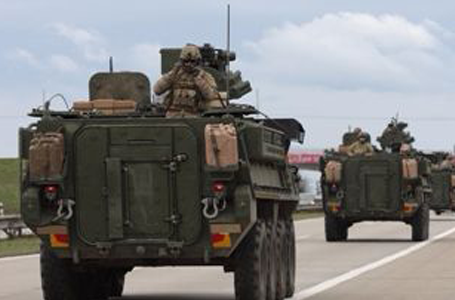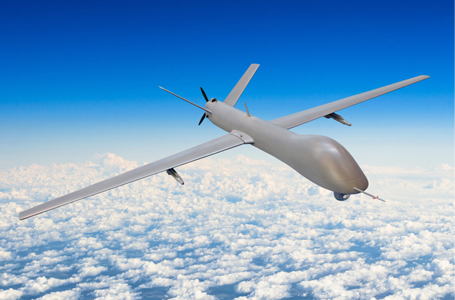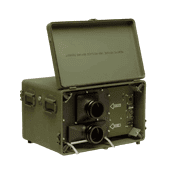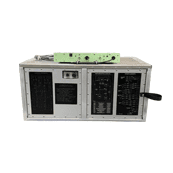Tag: Military
When it comes to the operational readiness and longevity of military equipment, temperature control is a critical factor. From robust weapons platforms to sensitive electronics systems, maintaining precise temperature conditions is vital in guaranteeing peak performance and reliability in demanding military environments.
Here, we’ll discuss why defense applications rely on temperature control and some strategies to achieve optimal temperature regulation.
Why Temperature Control Is Crucial for Military and Defense Applications
Temperature control is a vital aspect of military operations, where precision and reliability are non-negotiable. Here’s an overview of why temperature management is paramount for safeguarding military equipment performance, reliability, and overall mission success:
- Maintaining Peak Performance: Temperature control systems maintain optimal military temperature ranges for electronics, communication devices, critical gear, and weapons systems. Exposure to extreme heat and cold poses substantial threats to these sensitive systems. Performance can degrade in several ways, such as reduced accuracy, slower processing, and communication malfunctions.
- Ensuring Longevity and Reliability: Temperature control prevents overheating and thermal stress in military assets. As a result, it protects equipment integrity and reduces costly repairs and replacements.
- Supporting Operational Readiness: Controlling temperature minimizes equipment downtime and guarantees assets are ready for deployment when needed. This supports mission success and personnel safety.
- Mission Criticality in Diverse Environments: Military equipment is used across a range of terrains with diverse temperatures, from arctic tundras to arid deserts to tropical rainforests. In fact, military temperature ranges can vary the most widely compared to other industries, from as high as 50 °C (122 °F) to as low as -25 °C (-13 °F). Temperature control systems must be adaptable and robust, capable of keeping optimal conditions across a wide array of operational settings.
Strategies for Maintaining Optimal Military Equipment Temperature
In important military operations, keeping equipment running smoothly in any environment requires solid strategies for managing temperatures:
- Monitoring Systems: These systems track humidity and temperature levels in military environments, providing real-time data to personnel so they can make timely adjustments and guarantee equipment is functioning within safe operational parameters.
- Insulation: Insulation minimizes heat transfer to retain warmth in frigid conditions and to keep equipment cool in hot environments. This strategy boosts energy efficiency and stabilizes equipment temperatures to support performance and longevity, especially in outdoor use and storage applications.
- Ventilation: Good airflow and ventilation dissipate heat generated by military equipment to prevent overheating.
- Dehumidification: Controlling moisture prevents corrosion and protects the functionality of sensitive electronics, particularly in humid conditions. Dehumidification systems pull excess moisture from the air to safeguard equipment.
- Regular Inspections and Maintenance: This consists of scheduled checks confirming that military temperature control systems, insulation, dehumidification, and ventilation systems are operating properly.
Contact Air Innovations: Your Source for Specialized Military ECUs
Air Innovations is your trusted partner for custom-engineered environmental control solutions built specifically for military needs. Military operations continue to grow in complexity and take place in diverse environments with challenging temperature control needs. Air Innovations offers specialized military environmental control units (ECUs) engineered to withstand extreme temperatures as well as sand, salt air, humidity, and other harsh environmental conditions. With a proven track record of innovation and reliability, Air Innovations provides custom solutions for unique challenges that cannot be addressed with existing or off-the-shelf products.
In addition, clients turn to us because our entire infrastructure—from our engineering department to our prototyping and testing capabilities—is designed to deliver tailored, low-volume run solutions that meet rigorous requirements. Specific capabilities of our ECU solutions include:
- Operating in Extreme Climates: Our ECUs can maintain reliable performance across a wide range of temperatures, from -31 °C (-24 °F) to +50 °C (+122 °F).
- Relative Humidity Control: Accurate humidity control protects sensitive equipment, preventing premature corrosion and supporting optimal functionality.
- HEPA/ULPA Filtration: Depending on your air quality needs, we produce ECUs with HEPA or ULPA filtration.
- Severe-Duty Ruggedization: We design durable solutions that withstand the most challenging environments.
Contact Air Innovations today to learn how our specialized ECUs can meet your defense project requirements.




